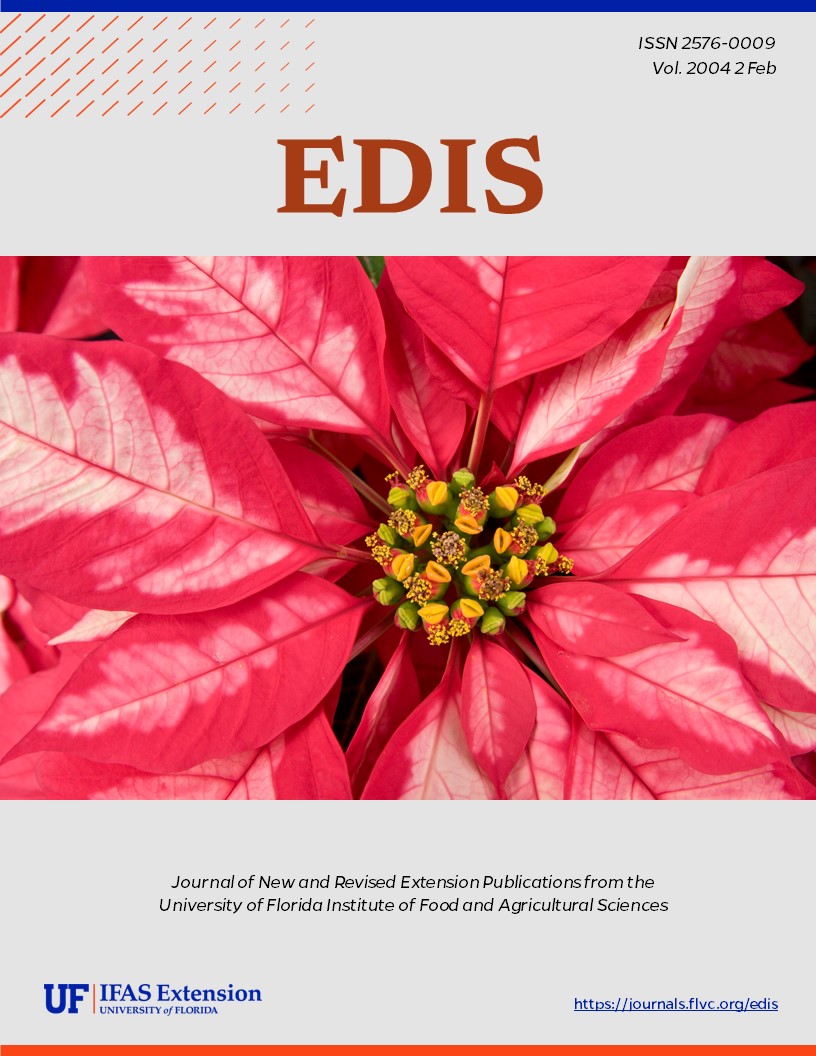Abstract
In October 1984, the honey bee tracheal mite, Acarapis woodi (Rennie), was found in Florida. Although it was first described by Rennie in 1921, the mite was not found in the United States until 1984. Rennie described the mite from bees on the Isle of Wight and associated it with the "Isle of Wight" disease. Symptoms of this infestation were described as "bees crawling about unable to fly, and with wings disjointed; dwindling and mortality of colonies have been said to occur rapidly with colonies dying within a month." It was later shown that the tracheal mite was not the cause of the "Isle of Wight" disease (Bailey 1964), and later reports (Bailey 1968, Morse 1978) indicate that A. woodi is not as serious a pest of honey bees as previously thought. In combination with other adverse conditions, however, heavy mite infestations may cause a reduction in bee activity. This document is EENY-172 (originally published as DPI Entomology Circular 267), one of the Featured Creatures series of the Entomology and Nematology Department, Cooperative Extension Service, Institute of Food and Agricultural Sciences, University of Florida. Published: November 2000.
References
Bailey, L. 1964. The Isle of Wight Disease: the origin and significance of the myth. Bee World 45: 32-37, 18. https://doi.org/10.1080/0005772X.1964.11097032
Bailey, L. 1965. The effect of Acarapis woodi on honey bees from North America. Journal of Apicultural Research 4: 105-108. https://doi.org/10.1080/00218839.1965.11100113
Bailey, L. 1968. Honey bee pathology. Annual Review of Entomology 13: 191-212. https://doi.org/10.1146/annurev.en.13.010168.001203
Definado, M.D. 1963. Mites of the honey bee in Southeast Asia. Journal of Apicultural Research 2: 113-114. https://doi.org/10.1080/00218839.1963.11100070
Definado-Baker, M., and E.W. Baker. 1984. Notes on honey bee mites of the genus Acarapis Hirst (Acari: Tarsonemidae). International Journal of Acarology 8: 211-266. https://doi.org/10.1080/01647958208683299
Fyg, W.W. 1964. Anomalies and diseases of the queen honey bee. Annual Review of Entomology 9: 207-224. https://doi.org/10.1146/annurev.en.09.010164.001231
Guzman-Novoa, E., and A. Zozaya-Rubio. 1984. The effects of chemotherapy on the level of infestation and production of the honey in colonies of honey bees with acariosis. American Bee Journal 124: 669-672.
Morse, R.A. 1978. Arachnids: Acarina (mites and ticks), p. 197-209, In Morse, R.A., ed. Honey bee pests, predators, and diseases. Cornell University Press, Ithaca. 430 pp.
Rennie, J. 1921. Isle of Wight disease in hive bees - Acarine disease: The organism associated with the disease Tarsonemus woodi, n. sp. Transactions of the Royal Society of Edinburgh 52: 768-779. https://doi.org/10.1017/S0080456800016008
Unless otherwise specified, articles published in the EDIS journal after January 1, 2024 are licensed under a Creative Commons Attribution-NonCommercial-NoDerivs 4.0 International (CC BY-NC-ND 4.0) license.

